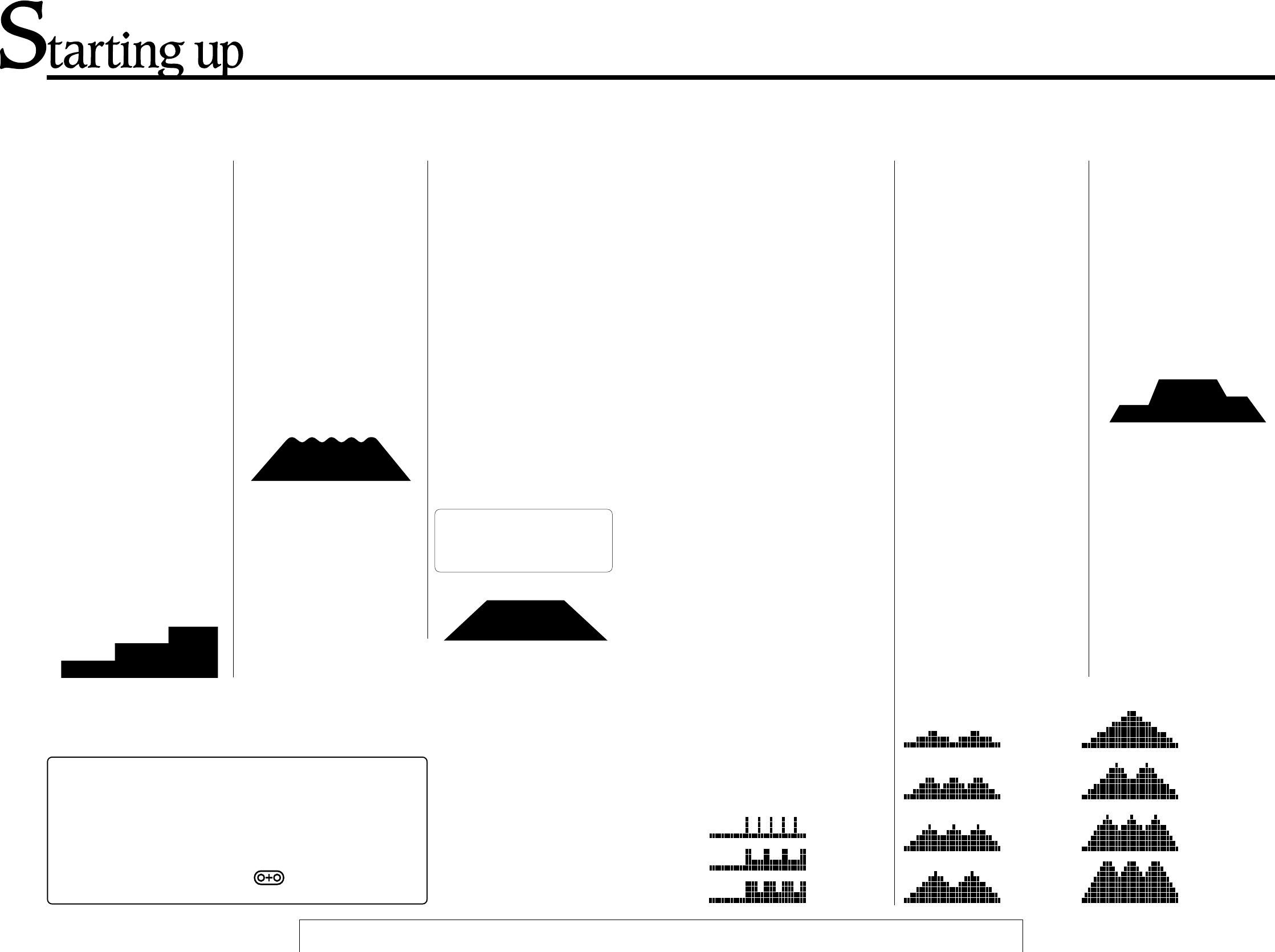
16
PULSE RATE
The six programs of operation
2 Automatic training
(training at a constant pulse
rate)
• You set the pulse rate at which
you want to exercise and the
Model EC-3700 automatically ad-
justs pedal resistance to maintain
that pulse rate. This is an ideal ba-
sic form of aerobic training.
• As you repeat the exercise at a
certain pulse rate and make
progress in your fitness level, you
will be able to create a greater
work intensity under the same
pulse rate. Further, you will be
able to try exercising at a higher
target pulse rate.
3 Isopower training
(training at a constant
energy expenditure)
• The work rate or the figure for en-
ergy expenditure (watts) shown
on the screen of the Model EC-
3700 is calculated from pedal re-
sistance (kg·m) and cadence
(rpm).
• In isopower training, you set the
desired work intensity in watts.
The Model EC-3700 automati-
cally adjusts the pedal resistance
(kg·m) depending on your pedal
cadence (rpm), so as to keep a
constant work rate in watts.
• This type of training is also called
constant load, and is often used in
cardio-vascular rehabilitation.
Control range:
cadence: ----- 40~100 rpm
wattage: ------ 25~200 watts
Note: If you set your target watt-
age as under 50 watts, control
limit of cadence (rpm) be-
comes under 100 rpm.
TORQUE
Upper Pulse Limit Alarm
• For your safety, the upper pulse limit alarm is provided in all the pro-
grams of the EC-3700. If your pulse rate exceeds this limit, the buzzer
beeps and the pedal resistance automatically drops to the minimum of
0.5 kg·m.
• If this alarm is activated, the program is suspended at that point and en-
ters the cool down phase, except in "Manual training" program in which
you can continue the exercise using button to set the desired
torque again.
WORK RATE
control unit base
1 Aerobic power
measurement
(physical fitness test)
• Over a period of 10 minutes, you
will encounter three different lev-
els of pedal resistance. Your pulse
will change in response to the dif-
ferent levels of resistance, and this
change in pulse will be used to cal-
culate your overall fitness level,
also expressed is MOU (VO
2
max). MOU stands for maximum
oxygen uptake. The higher your
overall fitness level, the greater
your endurance.
• Your MOU value is compared
with the MOU values of other
people who are the same age and
sex as you. You are given a physi-
cal strength number from 1 to 5
depending on how you rank.
• These results should give you a
good idea of your own fitness
level and help you to determine
what sort of training program will
be the most effective for you. For
information on how to choose a
training program, refer to "Your
strength level and training index"
on page 22~25 in the Operation
section on this booklet.
17
4 Interval training
(exercise + relief periods)
• By switching back and forth be-
tween exercise and relief periods of
varying length, interval training
gives you the kind of program that
professionals use to build their
stamina and energy.
• On the model EC-3700, 3 patterns
of interval training programs are
preset for developing dashing
power, speed, or your stamina re-
spectively, PLUS one customized
pattern for you to input your per-
sonal program.
TLD-1: dash strength training
(sprint power)
15 seconds exercise fol-
lowed by a 45 second relief.
TLD-2: speed training
(anaerobic power)
30 seconds of exercise fol-
lowed by a 60 second relief.
TLD-3: stamina training
(aerobic power)
60 seconds of exercise fol-
lowed by a 30 second relief.
TLD-4: customized pattern
•
Choose one of the above patterns, and
adjust the level of intensity by specify-
ing pedal resistance (torque: kg·m).
•
During the exercise period (in-
creased load portion of interval),
you should pedal with your greatest
effort, then you should pedal slower
and lighter during relief period
(lower load portion of interval).
• In the TLD-3 stamina training pro-
gram, it is advisable to pedal fast
enough in the exercise period to
keep your pulse rate at 60~80% of
the maximum pulse rate for your
age. (Refer to page 22~23)
• By choosing TLD-4 customized
pattern, you can write in your origi-
nal pattern as desired. (See pages
40 and 41.)
6 Manual training
(training at any desired
pedal resistance)
• You choose the pedal resistance
(torque: kg·m), and it stays con-
stant regardless of your pulse rate
or pedal cadence. This is the most
traditional way in which station-
ary bicycles have been used.
Torque setting range:
0.5~4.0 kg·m
Minimum graduation:
0.1 kg·m
5 Hill profile training
( training by cycling up
mountains )
• Pedal resistance changes over
time to simulate the effect of cy-
cling in the mountains. All
changes in pedal resistance are
shown on the screen.
• The following eight types of
mountain profiles plus one cus-
tomized pattern are programmed.
PRF-1: the Apennines (Italy)
PRF-2: the Apparachian
(U.S.A.)
PRF-3: the Cascades (U.S.A.)
PRF-4: the Pyrenees
(France, Spain)
PRF-5: Mount Fuji (Japan)
PRF-6: the Rockies (U.S.A.)
PRF-7: the Alps (Switzerland)
PRF-8: the Himalayas (Nepal)
PRF-9: customized pattern
• The mountain profiles from 1 to 8
are arranged in order of ascending
difficulty. Do not strain yourself,
but rather enjoy the form of each
mountain.
• Selecting PRF-9 customized pat-
tern, you can create and input
your original hill profile. (Also re-
fer to pages 40 and 41.)
• Minimum training time is 16 min-
utes. If you set a longer training
time, the mountain profiles will be
stretched out horizontally.
PRF-1:
the Apennines
PRF-2:
the Apparachian
PRF-3:
the Cascades
PRF-4:
the Pyrenees
PRF-5:
Mount Fuji
PRF-6:
the Rockies
PRF-7:
the Alps
PRF-8:
the Himalayas
TLD-1:
dash strength training
TLD-2:
speed training
TLD-3:
stamina training
TORQUE


















